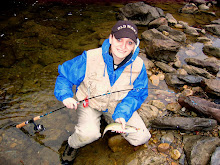1)"A fourth-grade teacher grinned up at me knowingly as she condemned a young mother: "I knew she was ignorant just as soon as she opened her mouth!"
This very first line instantly got a strong reaction out of me. How can a teacher be so condescending? I hope as a teacher I am never this judgemental about the parents of my students.
2)"In fact, all chlidren do not behave in ways tha tlet us know that they have learned and are learning about written language when they are very young. That is because not all children learn about written language to the same extent during their pre-formal instruction years"
This surprised me. I had the misconception that all young children pretend to read and write. I know I did as a child. I just assumed that this was the case for everyone. I need to keep my own experiences out of my views of how other children learn.
3)"Looking a the larger study first, I documented that, yes, overall there were relatively few instances of reading and writing in these homes; but there was a rang from almost no uses of print to print use that looked just like the middle-class homes described by others"
This is in reference to low-income families use of print affecting the literacy of the children in those homes. I am surprised that the same results show for no print use and moderate print use. I would think there would be a direct correspondence to the use of print and the amount of literacy. On a graph, I'd assume the slope of the literacy line would steadily increase with the amount of print use.
4)"They did not understand that print existed as a meaningful semiotic system; it did not "mean", did not function in their lives. And they lived full and interesing lives without it."
This was very interesting when I read it. We had a conversation about types of litereacy in Pedagogy of Literacy class last semester and discussed how we all possess different types of literacy. Reading and writing are vital to living in the professional world, but we should not neglect the literacy people do possess, even if they cannot read and write.
5)"The implications of this stance of cultural difference instead of deficit for educators is profound"
I have never heard anyone refer to this lack of literacy as a difference rather than a deficit. I can absolutely understand what this author is intending in this piece. Knowing the different experiences of our students help us to know why they have different literacy levels.
6)"If the child's family is poor, his parents undereducated, his dialect nonstandard, then we are much more likely to interpret experiential difference as a deficit in the child, in the parents, in the home, in the sociocultural community within which this child has grown up. And when we do this, we play God, conferring or denying educational opportunity to individual, socioculturally different, children. And we do not have the right to do this."
This one paragraph has the most impact of anything I've read so far in this piece. I am guilty of this type of preconception of students who live a life like this. I consider it a deficit and that I need to right the wrong. Blaming the parents often occurs in situations like this. Every child needs educated, and those who come from low socioeconomic homes should not suffer the condescending attitudes because their living situation is beyond their control.
7)"As if she had never appeared before them, the teachers and the principal continued to send written notes home, never call, and to complain officially that the parents never responded to messages; they passed Donny to second grade, dismissing her concerns about his failure to learn"
Wow. We hear this happening so often. Students slipping through the cracks and shoved on to the next grade so someone else can take care of them. You never hear of illiterate parents asking for their child to have the chance to be held back and surpass the difficulties they experienced themselves. I am disgusted with the administration and teachers of this case study. A lot of the failure of so many students can, in my opinion, be contributed to teachers and principals who neglect the students most in need.
8)"First, and most obvious, teachers and schools must accept, believe, and act upon the belief that children of poverty are learners, have been learning since birth, are ready to learn at any time, and will learn."
This sums up my philosophy of teaching. All children have this ability. It is how they need to be taught and the experiences they possess that make them unique. I think we would be shocked to know how often teachers do not follow this first suggestion made. I've seen it first hand with cooperating teachers.

